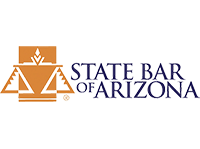Despite efforts to overhaul the Arizona Department of Child Safety (DCS) for the better, two cases of severe child abuse involving malnourishment, neglect and death have made headlines in the Valley recently.
In late May, 3-year-old Alexandra Velazco was found dead in her home in Surprise despite several interactions with DCS before she was even born.
In May 2011, Alexandra and her mother, Rosemary Velazco, both tested positive for amphetamines. She was removed from her parents care for a year after her birth until both Rosemary and Alexandra’s father, Carlos Cruz, completed substance abuse treatment and parenting classes in April 2012. A few months later in July, the case was closed.
However, complaints were made to DCS again earlier this year, and agents removed an infant from their home not knowing that Alexandra and her 6-year-old brother were living there. The two were kept out of sight in a bedroom.
When Alexandra was found, she weighed only 15 pounds, was covered in bruises, lacerations and showed signs of sexual abuse, The Arizona Republic reports.
Joylynne Giebel is another example of a child who died under the watch of DCS. On June 5, DCS got a call that Giebel, 21-months-old, was dead in her home in Mesa. She died six months after DCS received its fifth call for complaints that her stepfather, Andrew Isaacs, abused and neglected her.
She was found with bruises on her face and body, internal trauma and three broken ribs, according to the DCS report.
While this type of extreme abuse most likely isn’t an everyday case for DCS workers, reports indicate that abuse and neglect aren’t uncommon in the state.
Recent data from DCS reports that one out of every 100 children in Arizona is in a form of foster or out-of-home care, and a 2014 comparison of each child protection system in the state by the Annie E. Casey Foundation ranked Arizona’s system 46th in the nation.
Earlier this year, a coalition led by the Arizona Center for Law in the Public Interest against DCS and Department of Health Services filed a federal class-action lawsuit due to the maintenance of a “dangerous, severely deficient foster care system,” Phoenix New Times reports.
To make matters worse, DCS is also under pressure to take care of 13,000 cases that have been considered inactive and others that haven’t been investigated at all in addition to the active cases workers attend to every day.
Arizona has been working for over a year to improve the system since former Governor Jan Brewer abolished Child Protective Services for a new, cabinet-level system.
Former DCS director Charles Flanagan and current director Greg McKay have made efforts to correct the system by fixing the child abuse hotline, increase staffing and improving the quality of foster families, but the deaths of Alexandra Velazco and Joylynne Giebel bring to light that these changes haven’t been significant enough to overcome the shadow surrounding DCS and child abuse in the state.






